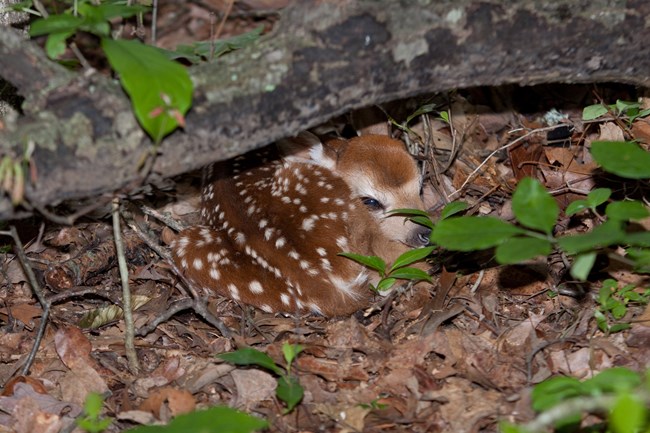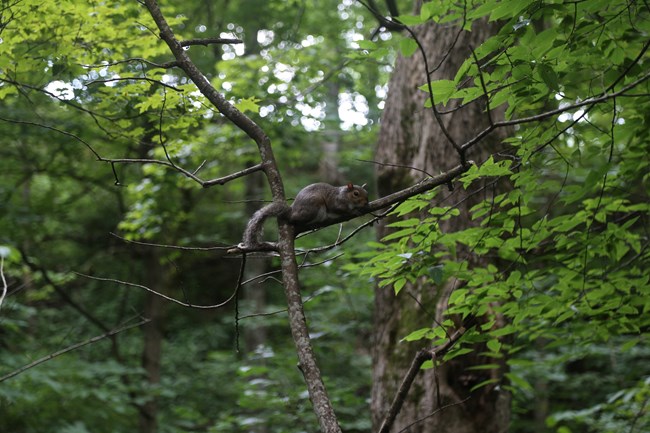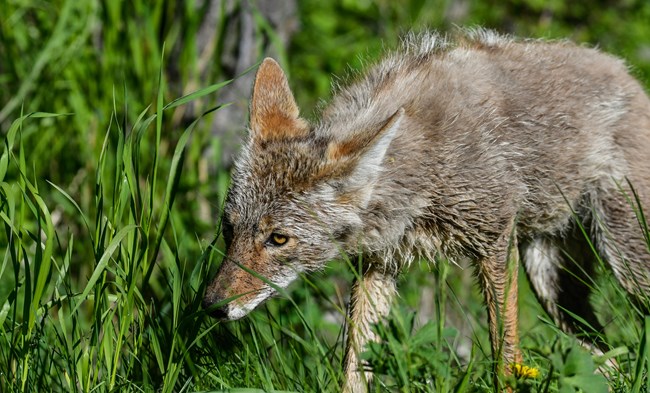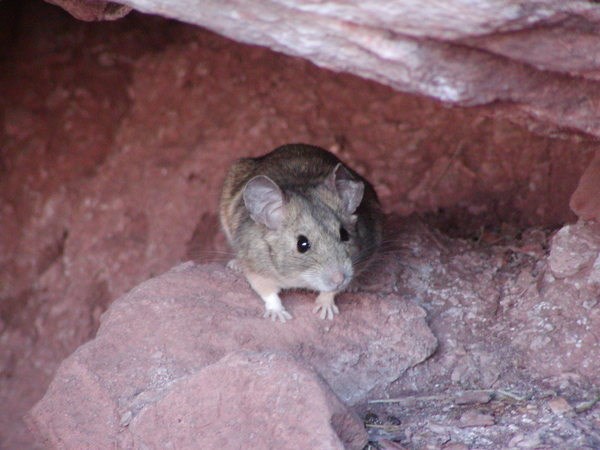|
Many mammal species of the park are rarely seen except by very lucky or frequent visitors, but a keen eye and patience may allow for a sighting of one of the many mammals that call Mammoth Cave National Park. 
NPS Photo/ Deb Spillman Commonly Seen Mammalswhite-tailed deer Odocoileus virginianusOne of the most common mammals seen in the park are white-tailed deer. They are herbivores that predominantly feed on grasses and shrubs. Male deer, known as bucks, will begin to grow antlers in late spring that are covered with a blood vessel filled tissue known as velvet. After the fall rut, bucks will shed their antlers, typically from late December to February. The next set of alters will begin to grow in the spring. 
NPS Photo Eastern grey squirrel Sciurus carolinensisSeen scurrying up a tree or heard rustling through the leaves on the forest floor, the Eastern grey squirrel is one of the most seen animals in the park. As a prolific and adaptable species, the Eastern grey squirrel is a tree squirrel that can be found throughout Eastern North America. 
NPS Photo/ YELL/ © Jane Gamble Lesser Seen MammalsBatsBats make up a wide range of species around the world and it's no different at Mammoth Cave. The park is home to 13 species of bats, three of which are listed as threated or endangered on the federal endangered species list. Learn more about the incredibly diverse species of bats in the park. coyote Canis latransWhile this versatile species usually keeps well hidden, coyotes have been spotted across North America in both rural and urban areas. Often seen darting across roadways in the evening throughout the park, coyotes can either be solitary or have a complex social system. Coyotes are opportunistic feeders known as omnivores, eating both animal protein and plant material such as fruits and vegetables. American black bear Ursus americanusKentucky legend tells a story of a young pioneer boy named John Houchin, who one day while out hunting, shot and wounded a black bear. The bear took shelter in the wide natural entrance of Mammoth Cave now known as the Historic Entrance, and young Houchin went in after it. In doing so, Houchin has been credited with the discovery on Mammoth Cave. While this legend has been shared and reshared for decades, the first written account of the story happened nearly 20 years after the fact. 
NPS Photo Allegheny woodrat Neotoma magisterCommonly referred to simply as a packrat, the Allegheny woodrat is a trogloxene, meaning that it makes use of both cave and surface habitats. As the name “packrat” implies, this rodent will gather a collection of items to be used in part of its nest called the midden. Woodrats will use whatever supplies are easily found to build its midden, this may mean leaves, twigs, and pine needles, or it may mean ticket stubs, caution tape, and candy wrappers. Mammals No longer Seen in the ParkAmerican bison Bison bisonThe American bison, also colloquially referred to as buffalo, historically used to range as far east as the Appalachian Mountains. This species nearly went extinct in the 1800s during European-American westward expansion. Today these massive animals are primarily seen on public lands like Yellowstone National Park or are raised on private land for commercial use. In western Kentucky a small herd of bison can still be seen at Land Between the Lakes National Recreation Area. |
Last updated: November 16, 2021
